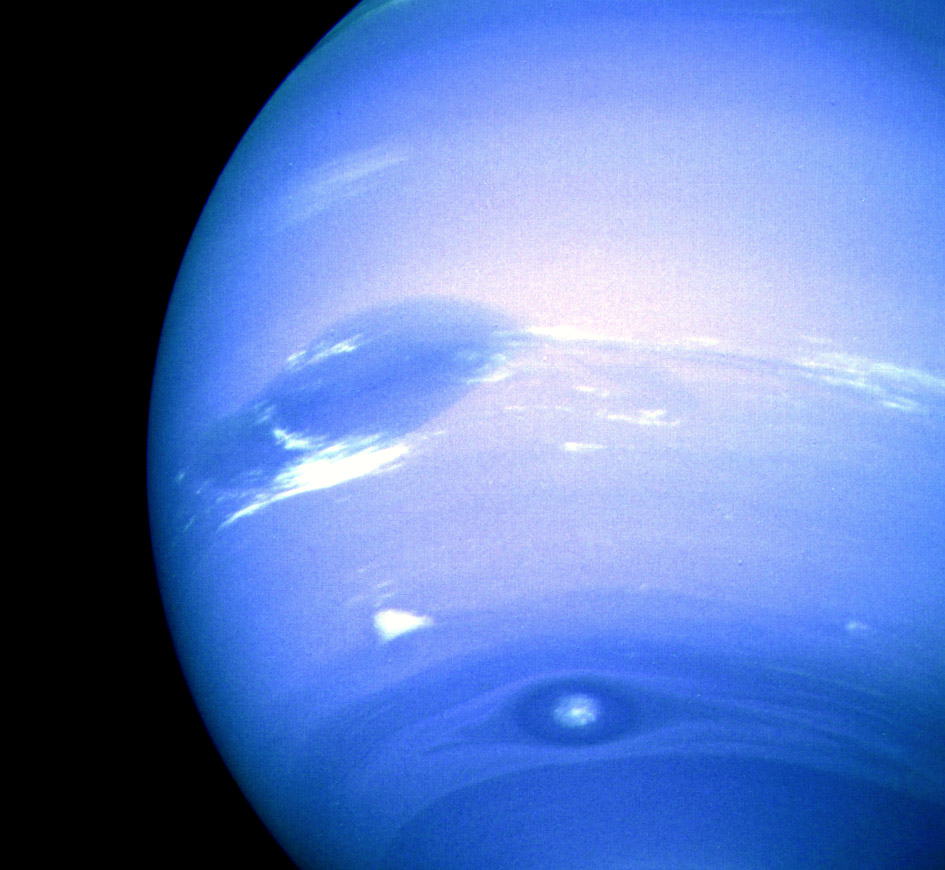
READ Part 1 and Part 2 of AmericaSpace’s Neptune 30th anniversary commemorative feature.
Thirty years ago this weekend, NASA’s Voyager 2 spacecraft swept silently above Neptune’s royal-blue cloud-tops and revealed a world on the ragged edge of the Solar System which yielded more questions than answers and more mysteries than solutions. Coming 42 months after it passed Neptune’s near-twin, Uranus, it was expected that the two giant planets—so akin to one another in size and chemical composition—would share many similarities. Yet whilst Uranus proved to be a quiet world, with a misleadingly calm atmosphere, it became abundantly clear in the months prior to Voyager 2’s visit that Neptune was quite the opposite. Its dynamic atmosphere sprang into the worldwide headlines in early 1989, when NASA revealed the discovery of large cloud structures. These far-off observations corroborated similar Earth-based studies, but more was to come as the tiny spacecraft drew closer.
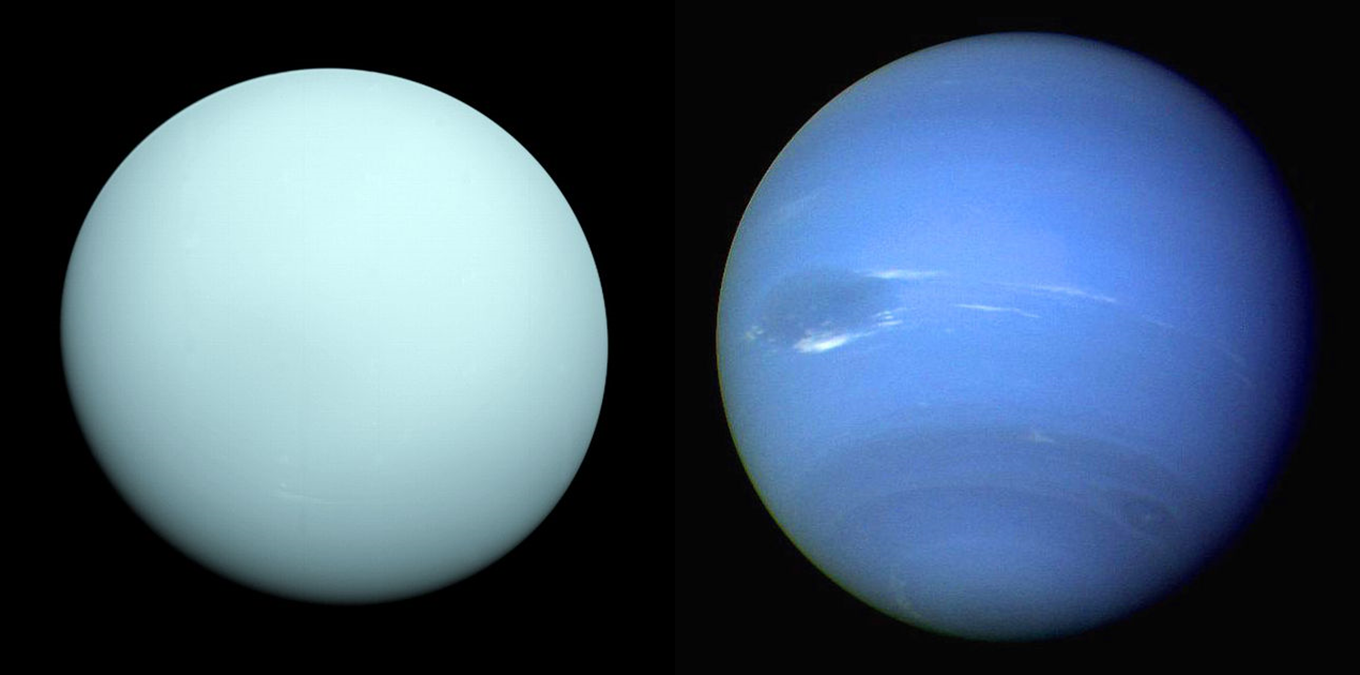
By March 1989, a large oval feature was detected in Neptune’s southern hemisphere, which came to be labeled the “Great Dark Spot”, by analogy with the centuries-old storm on Jupiter. The spot paralleled its Jovian counterpart in several regards: its diameter relative to the size of its host planet was broadly the same, it too rotated counter-clockwise—implying that it too was a high-pressure, fast-rotating atmospheric vortex—and it occupied the same latitudinal co-ordinates (22 degrees South) as the Great Red Spot.
On 5 June, the multi-month campaign to study Neptune began in earnest, with an initial “Observatory” phase. At this point, other features on the planet had become apparent, including a dark longitudinal “band”, spanning much of the southern hemisphere; similar banding would be detected later in the 1990s by the Hubble Space Telescope (HST) and the ground-based Keck-II instruments atop Mauna Kea in Hawaii. These features are thought to represent active regions of the atmosphere, rather than singular, short-lived storms. During the Observatory period, Voyager 2 acquired five narrow-angle images during each rotation of Neptune. These were then combined to produce time-lapse movies of the atmosphere in mesmerizing action, allowing planetary meteorologists to trace the formation and dissipation of cloud structures and calculate wind speeds.
On terrestrial planets like our Earth, such imaging aids the determination of rotation rates, but Neptune’s high winds—which vary considerably at different latitudes—tend to hide its bulk motion. Moreover, different regions of its atmosphere rotated at different speeds. As a consequence, Voyager 2 “observed” Neptune’s core rotate by measuring interactions between charged particles trapped in its magnetic field and solar wind particles streaming from the Sun. Early estimates for the length of a Neptunian “day” ranged from eight to 24 hours, but had been refined to about 17 hours through ground-based observations. Voyager 2 pegged the bulk rotation rate, with an accuracy of better than a minute, at 16 hours and 6.7 minutes. Such a fast rate is typical of the giant gaseous planets and causes Neptune’s poles to appear flattened (a phenomenon known as “oblateness”), which in some areas makes its polar radii up to 250 miles (400 km) less than its equatorial radius.
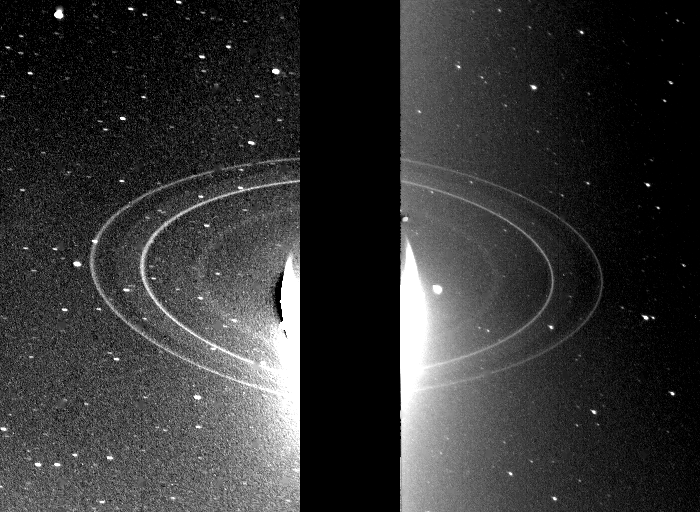
By mid-August 1989, the Observatory phase shifted into the Far Encounter phase. As Neptune’s bulk began to more than fill the spacecraft’s narrow-angle lens, Voyager 2 began to resolve greater detail through wide-angle imagery. They revealed that the planet possessed not one dark spot, but two, as well as enigmatic clouds which raced through its atmosphere. The most noteworthy of these was the “Scooter”, a chevron-shaped, westward-moving structure, named in honor of its immense velocity. It took less than 16 hours to circle the planet. Even today, its nature remains imperfectly understood, although it appears to represent some kind of plume emanating from a deeper cloud deck.
Although the source of the Scooter likely originated below Neptune’s main layer of methane-rich cloud, the Great Dark Spot seemed to occupy a far loftier position. From close range, it appeared to be at least 10 percent darker than its sky-blue environs, implying that it sat as high as 30 miles (50 km) above the visible cloud deck. The spot had been too small to be seen with ground-based instruments, but a bright cirrus-like cloud—probably of frozen methane—had been seen from Earth as early as January 1989. It “hovered” along the edge of the Great Dark Spot and it was nicknamed the “Bright Companion”. Voyager 2 also revealed that it changed shape during each rotation period of the giant planet.
Strangely, though, it always remained inextricably tied to the spot, usually lingering close to its southern rim. Yet the Great Dark Spot itself lay some 60 miles (100 km) “below” the Bright Companion, which prompted several atmospheric specialists to liken it to lenticular cloud forms, found in mountainous regions on Earth. Clouds of this type form as a result of rapid cooling, when winds are pushed to higher altitudes by the presence of mountains, but at Neptune—a world devoid of any solid surface—the sole available “mountain” seemed to be the rising column of the Great Dark Spot itself.
Other, less pronounced cirrus streaks of methane ice also lay high in the atmosphere, forming and dissipating every few hours. At low northern latitudes, around 27 degrees North, Voyager 2 watched them casting long shadows on the main cloud, 30-60 miles (50-100 km) below. This was the first occasion the cloud “shadows” had ever been photographed on one of the giant gaseous planets. The streaks appeared to be 30-120 miles (50-200 km) across, casting shadows between 20-30 miles (30-50 km) wide. However, they did not form a continuous opaque layer and this gave Voyager 2 an unhindered view as far down as the main cloud deck.
The Great Dark Spot and its Bright Companion stretched and contorted restlessly as they traveled across Neptune’s disk. The storm was clearly nowhere near as stable as Jupiter’s Great Red Spot—which had endured largely unchanged for more than 300 years—and was described by one astronomer as “kind of floppy”. The material within the spot, including its bright central core, spun counter-clockwise every 18 hours and the entire storm, clipping along at 680 mph (1,100 km/h), took eight Earth-days to travel around the atmosphere.
In fact, it was in the vicinity of the spot and its companion that the fastest-known winds ever recorded in the Solar System were measured: close to 1,240 mph (2,000 km/h), surpassing even blustery Saturn, the previous record-holder. As it moved its way through the atmosphere, the Great Dark Spot was also slowly migrating northward, heading for the equator, at a rate of about 15 degrees of latitude per year. According to predictions made at the time of Voyager 2’s encounter, it should have reached the equator, and its powerful, westward-blowing jet stream, by 1991-1992. However, HST imagery in 1994 revealed that both the spot and the Bright Companion had vanished completely.
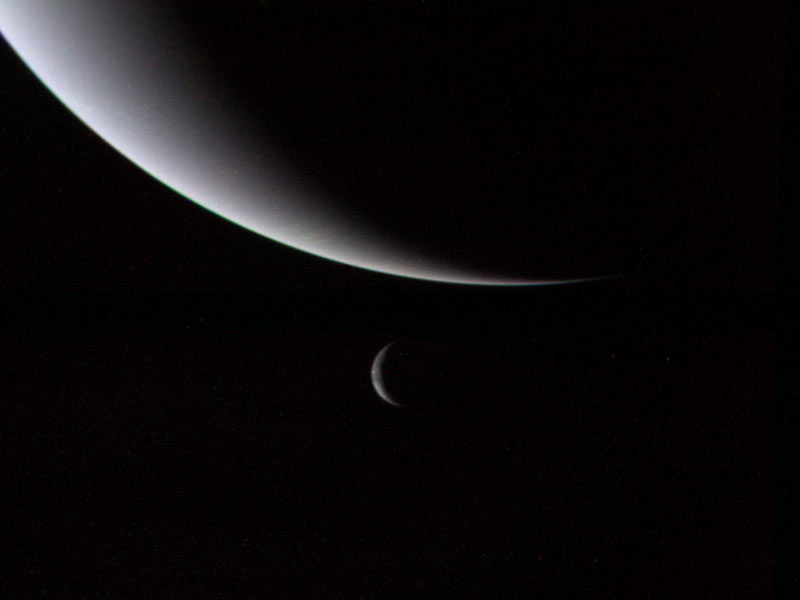
Moreover, the smaller spot (dubbed “D-2” by the Voyager team) was also gone. Although it was tiny in comparison to the Great Dark Spot, it was still the size of our Moon and shared several similarities with its big brother: a bright, rapidly-moving core and attendant clouds of methane ice, carried along by 400 mph (640 km/h) winds. It was assumed that the spots and their entourage did not survive passage through Neptune’s equatorial region. However, in November 1994, another storm was spotted through HST images in the northern hemisphere. It was virtually a mirror image of the Great Dark Spot and led to astonishment at the atmospheric dynamism of such a cold world, so far from the Sun.
In fact, many of Neptune’s atmospheric phenomena endured for several years. It is unknown how “old” the first Great Dark Spot was when photographed in 1989—the Bright Companion was first spotted in January—but its northern successor lasted for more than two years. HST imagery from mid-1996, together with infrared imaging from ground-based observatories, revealed the second spot to be alive and well, as was Neptune’s powerful equatorial jet stream. These findings clearly demonstrate a highly active planet.
Neptune emits 2.6 times as much heat as it receives from absorbed sunlight. This “energy balance” is more than twice that of its near-sister, Uranus, and when set in proportion to Neptune’s size and mass, is larger than that of any other planet in the Solar System. The nature of whatever internal heat source is responsible for driving this active weather remains a mystery, in spite of insights yielded by Voyager 2. Even today, with advanced “adaptive optics”, most scientific thinking remains on a theoretical level and must await a future mission to the planet to be uncovered in more detail.
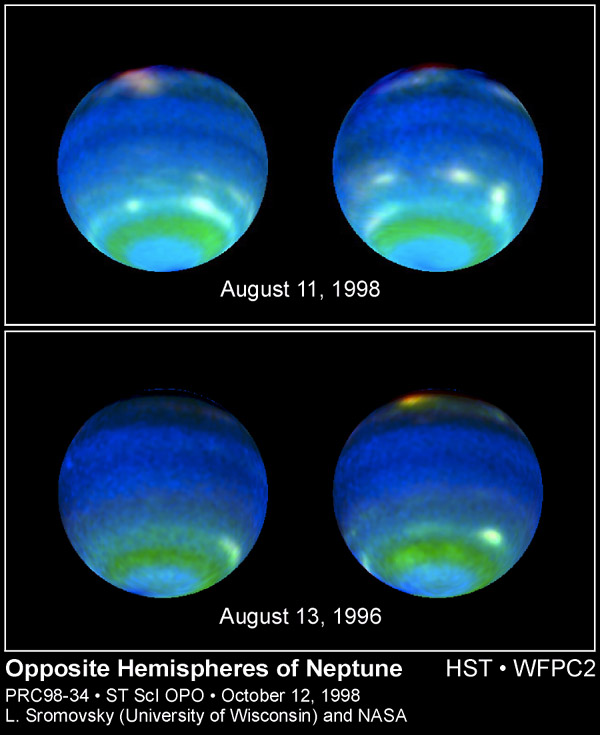
It is assumed that Neptune possesses a rocky core, although this is far from certain. If such a core exists, it is likely two or three times the size of Earth and constitutes only a few percent of the giant planet’s mass. Opinion as to its temperature remains divided, with estimates ranging from 6,000-10,000 Kelvin. It might then be surrounded by a thick, slushy “ocean” of icy and rock, comprising more than 90 percent of the mass, and finally overlaid by a gaseous region, 1,800-3,600 miles (3,000-6,000 km) deep, of hydrogen and helium, together with smaller traces of water, ammonia, and methane. Whether there is a sharp or gradual transition from the deeper, hotter layers into this outer gaseous envelope is unknown. Others, however, argue that planets with extremely dense, rocky cores should have much shorter rotation rates than the 16 hours clocked by Voyager 2’s instruments for Neptune. This has led to increased speculation that the planet’s icy and rocky elements might actually be mixed quite uniformly in its interior. In fact, the only “ice” in large enough quantities to be directly seen by Voyager 2’s radio science occultations was methane, although, like Uranus, water and ammonia ice were predicted at greater depths.
Further parallels with Uranus came with the detection of hydrogen, helium, and methane in Neptune’s atmosphere, together with acetylene, hints of ethane and possibly haze-forming polyacetylenes. However, several fundamental differences between Uranus and Neptune were identified by Voyager 2, the most obvious of which are their respective colors: aquamarine, versus sky-blue. As on Uranus, the absorption of sunlight by atmospheric methane is primarily responsible for Neptune’s overwhelmingly blue hue, but its deeper coloration implies a slightly different agent. The nature of this coloring agent is unknown, although it has been suggested that a blue-tinted cloud deck in the troposphere, perhaps composed of hydrogen sulphide, might be a key driver.
Neptune also differs from Uranus in that its axial inclination is fairly normal, inclined at 29.6 degrees to the plane of its orbit, which causes it to receive considerably more solar heating at its equator than at its poles. It was initially suspected that this would produce a noticeable temperature differential between the near-twins. However, the actual difference is lower than predicted, implying that Neptune possesses some form of internal mechanism which transfers heat from its equator to its polar regions. It would seem that its convective interior is somehow connected to the parts of its atmosphere where sunlight is absorbed. This mechanism then blocks excess internal heat from escaping at the equator, pushing it instead to higher latitudes, where it helps to warm the poles.
The planet’s long-awaited rings also turned out to be quite different from those of Uranus and, indeed, also those of Jupiter and Saturn. On 11 August 1989, two weeks before closest approach, Voyager 2’s cameras spotted a pair of ring “arcs”—6,000 miles (10,000 km) and 30,000 miles (50,000 km) long—extending partway around Neptune. In July 1989, NASA had announced the detection of three new moons (later named Galatea, Larissa and Despina), which seemed to interact gravitationally with the ring arcs. These moons ranged from 90-125 miles (150-200 km) in diameter, remarkably close to the predicted sizes of the kind of moons which had be theorized to “shepherd” such ring-arc material.
As August wore on, it became clear that there were not two arcs, but four, and that they did, in fact, run fully around the planet. However, they were uneven in composition and somewhat “clumpy” in places. The outer ring, named in honor of the English mathematician John Couch Adams—who had been one of the first to independently predict Neptune’s existence in the 1840s—appeared to be accompanied by three to five clumps of material, each measuring up to 30 miles (50 km) wide. In subsequent years, it was argued that debris from destroyed moons might be responsible for this uneven spread of ring material. This theory was reinforced by a pair of tiny moons, Thalassa and Naiad, which both measure about 25 miles (40 km) in diameter and may be strong contenders to be themselves torn apart in the future to form part of the rings.
Neptune’s rings are intrinsically dark; so dark, in fact, that protracted, 10-minute-long exposures were demanded of Voyager 2 in order to resolve them. The spacecraft’s best images came in the small hours of 25 August, when it dipped “behind” the planet and acquired a high-resolution profile of their radial extent with its radio science instrumentation. The rings turned out to be very narrow, with the core of the Adams ring measuring only about 10.5 miles (17 km), which implies that they are also quite young.
Early on 25 August 1989, a quarter-century ago, Voyager 2 passed silently over Neptune’s north pole, then turned south, and, an hour later, crossed the ring plane at 16,100 mph (26,000 km/h). Its plasma wave instrument recorded about 300 “hits” per second of ring particles during the quarter-hour on either side of the crossing. Yet its whistle-stop tour of Neptune was not over. Hurtling southward, a few hours later, it encountered the large moon, Triton, which—as tomorrow’s AmericaSpace history feature will show—would turn out to be one of the most enigmatic objects in the entire Solar System.
- The final part of this four-part article will appear tomorrow.
.
.
FOLLOW AmericaSpace on Facebook and Twitter!
.
.




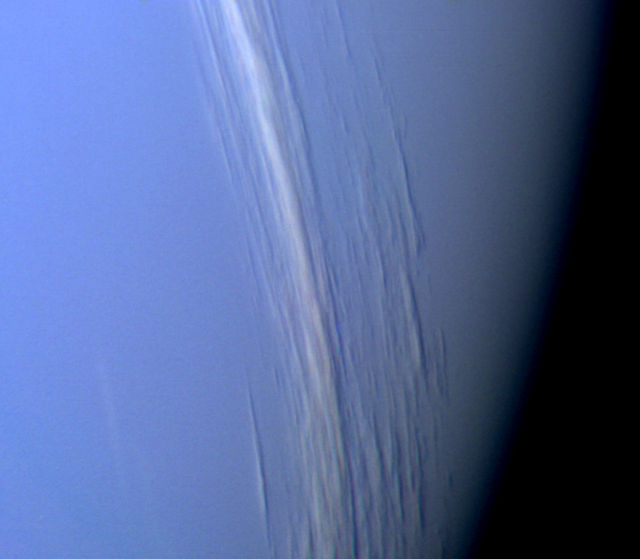
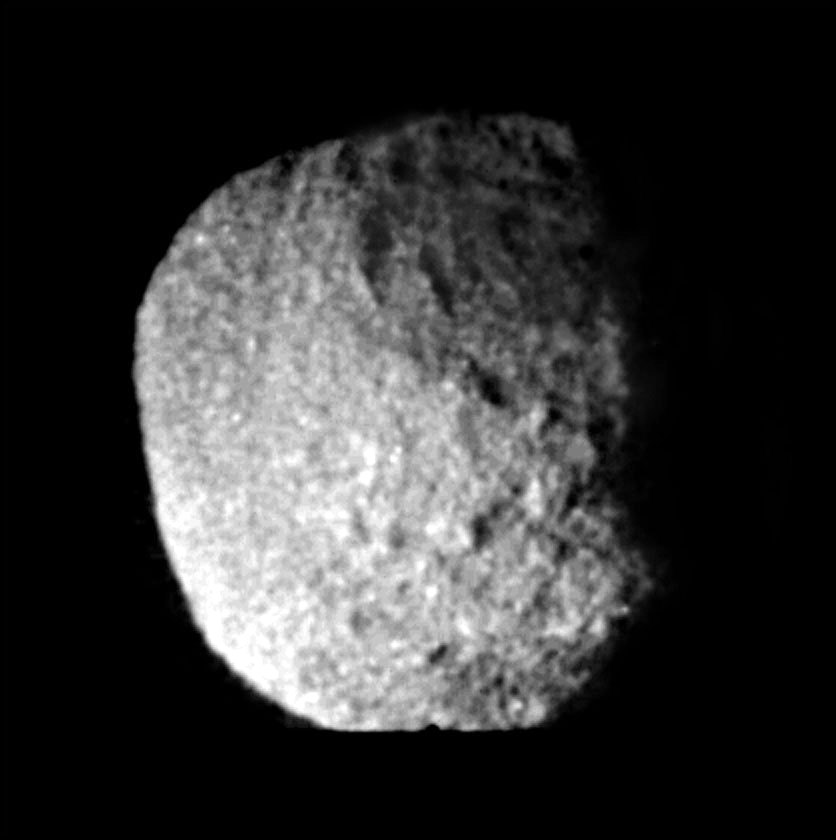
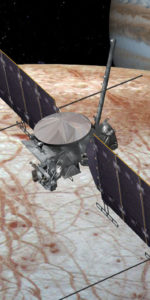
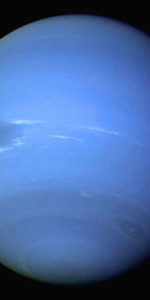
One Comment
One Ping
Pingback:Shrinking Triton: Remembering Voyager 2’s Encounter With Neptune, 30 Years On (Part 4) « AmericaSpace